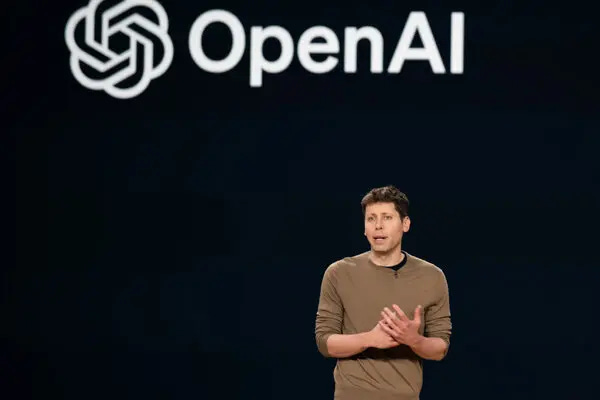Control, Altman, Delete
PLUS: Scaling past parameters, letting agents think in their sleep, the rise of AI-native shopping, and so much more.
After months of drama, lawsuits, and SoftBank-sized funding rumors, OpenAI has finally clarified its corporate soul. TL;DR? Sam Altman’s for-profit brainchild will still be steered by its nonprofit parent - at least on paper.
But don’t get it twisted. This isn’t a retreat from capitalism. It’s a structural jiu-jitsu move aimed at balancing billions in capital needs with a founding mission to "benefit all of humanity." Whether that balance actually holds… is the real question.
OpenAI will remain controlled by a nonprofit. But the for-profit engine is shifting into overdrive.
In a surprise reversal, OpenAI announced this week that it’s walking back plans to cede control of its for-profit arm. Instead, the nonprofit board will stay in charge—even as the company converts its LLC into a Public Benefit Corporation (PBC). It’s a compromise meant to appease regulators, investors, and perhaps Elon Musk, who’s still suing them.
Sam Altman called the move “not a sale, but a change of structure to something simpler.” The key difference? Instead of OpenAI’s weird capped-profit setup, everyone in the PBC gets traditional equity—and the nonprofit keeps a big chunk of it. That means the more the for-profit grows, the more firepower the nonprofit has to fund safety research, public goods, and (presumably) Sam’s ambition to “build a brain for the world.”
The result is a new legal structure, same existential tension: Can a nonprofit truly steer a trillion-dollar tech rocket? Will investor interests really remain "subordinate" to the mission? Or is this just a sleek new paint job on the same power train?
Time will tell - but it’s a major plot twist from one of the most powerful companies on the planet.
That said, this week’s newsletter was fun to put together - focused squarely on the frontlines of AI. We dive into two major shifts: the growing debate over whether Transformers are on borrowed time, and how sleep-time compute could quietly reshape how agents reason, learn, and evolve.
The Next Scaling Frontier Might not be Parameters
You’ve probably heard the phrase “scale is all you need.” But Jacob Buckman wants to flip that script. The ex-Google Brain researcher and Manifest AI founder (with a PhD from Mila, a double degree from CMU, and more citations than most of us have tweets) argues that we’ve already scaled the obvious things - model size and dataset size. What comes next?
Context size - how much information a model can actually remember while reasoning.
In the talk we linked above, Buckman breaks down something wild: today’s LLMs might have 400 billion parameters (aka 1.6 terabytes of “brain”), and be trained on 30 terabytes of data… but they can only “see” 256 kilobytes of text at a time when answering a prompt. That’s like giving a genius the Encyclopedia Britannica and then only letting them peek at one paragraph before asking a question. The result? Models that hallucinate, forget what you told them earlier, and constantly need to be reminded what they were doing. That’s the context bottleneck.
The culprit is the Transformer architecture itself. Every time you increase the length of the input, the amount of computation needed goes up quadratically. So even the biggest models are still trained mostly on short snippets of text (like 8K tokens), and struggle to use long documents effectively. Buckman’s team at Manifest is working on a fix: a new kind of attention mechanism called Power Attention. It processes information in a way that’s more efficient—like a model with a smart memory buffer instead of an expensive scratchpad. Instead of needing to look at every single token in a giant prompt, the model builds a fixed-size internal state that summarizes the important stuff, adapting its memory size depending on the problem. That means it can handle longer input without breaking the compute bank—and actually improve as it sees more context, not worse.
Here’s the big shift: this turns LLMs from “stateless chatbots” into something more like stateful agents. Instead of starting from scratch every time you talk to them, they can retain and reuse information across tasks, conversations, or even careers. And that changes everything. Suddenly, the edge goes to whoever has the best context, not just the biggest model. Your personal data, project history, or internal company docs could become the most important part of the system. That’s why Buckman says long context is the key to decentralized AI - where power comes not just from compute, but from what you feed the model.
how “sleep” lets agents evolve—like humans do
We’re used to thinking about AI systems as reactive: they wait for input, spin up a bunch of reasoning at test time, and return an answer. But what if they could think in the background? Reflect, reorganize, even anticipate - without anyone asking? That’s the core idea behind sleep-time compute, a new paradigm introduced by Letta that takes inspiration from, well… us. Just like humans consolidate memory and deepen understanding during sleep, agents can use their idle cycles to update internal state and improve performance before the next task even begins.
Technically, this requires moving from stateless to stateful agents - systems with persistent, structured memory. In Letta’s framework, this memory is stored as in-context memory blocks, representing facts, summaries, or traces of past reasoning. The innovation is architectural: each Letta agent is split into two roles. The primary agent handles user interactions - calling tools, chatting, performing tasks. But the sleep agent runs asynchronously in the background, reviewing memory, performing forward reasoning over known context, and editing or compressing knowledge into a more usable form. Think of it as a background garbage collector meets an insight engine.
The result is a shift from raw context (e.g. documents, transcripts, past logs) to learned context - where important patterns, assumptions, and insights have already been pre-computed. This drastically reduces the cost of future inference. Letta’s experiments show up to 5× compute savings at test time with no loss in accuracy, and even 13–18% accuracy gains when sleep-time compute is scaled up. The system amortizes expensive reasoning over time, especially in multi-query settings where one chunk of context can answer many related questions. Just like we don’t re-learn our apartment layout every morning, sleep-time agents don’t reparse their entire context on every prompt.
Because memory is updated incrementally and asynchronously, the primary agent can query it at any time - no need to wait for a big background job to finish. The system becomes both fast and reflective, scaling compute across time rather than model size. And crucially, it begins to take a step toward resembling cognition: a system that not only reacts to the world, but prepares for it.
We’ve linked a few open positions from Letta below if you are interested.
For the Students, By the Degens ⚡️
Skip the lecture, catch the alpha. Students from Harvard, Princeton, Stanford, MIT, Berkeley and more trust us to turn the chaos of frontier tech into sharp, digestible insights — every week, in under 5 minutes.
This is your go-to power-up for Web3, AI, and what’s next.
Job & Internship Opportunities
Product Designer Intern (UK) – Apply Here | Palantir
Research Scientist (Field) - Apply Here | Goodfire
Research Fellow (All Teams) - Apply Here | Goodfire
Website Engineer - Apply Here | ElevenLabs
Data Scientist & Engineer - Apply Here | ElevenLabs
Product Designer Intern (NY) - Apply Here | Palantir
Applied AI Engineer - Paris (Internship)– Apply Here | Mistral
Brand Designer - Apply here | Browserbase
A range of roles from YC Backed Humanloop - Apply Here
A range of roles from Composio - Apply Here
A range of roles from SylphAI - Apply Here
Partner Success Specialist - Apply Here | Cohere
Software Engineer Intern/Co-op (Fall 2025) - Apply Here | Cohere
GTM Associate - Apply Here | Sana
Sales Development Representative - Apply Here | Cresta
Brand Designer - Apply Here | Cresta
Product Engineer - Apply Here | Letta
Research Scientist - Apply Here | Letta
⚡️ Your Job Search, Optimized
We don’t just talk about building — we help you get in the room.
From protocol labs to VC firms, our students have landed roles at places like Coinbase, Pantera, dYdX, Solayer, and more.
Whether you’re polishing your resume, preparing for a technical screen, or figuring out where you actually want to be — we’ve got your back. 👇
Unsubscribe anytime - but if it’s not hitting, slide into our DMs. We’re building this with you, not for you.
Your AI Just Got a Credit Card
A lot happened in AI this week. OpenAI pulled a power pivot. Transformers might be on borrowed time. Agents can now to be built in a way that allows for thinking while they sleep.
But here’s the cherry on top: Visa just launched a platform that lets AI agents shop on your behalf.
It’s called Intelligent Commerce - a new initiative that gives agents the ability to browse, buy, and manage transactions for you, all through Visa’s trusted payments network. We’re talking agent-powered shopping carts, personalized recommendations based on 85+ behavioral signals, and even built-in dispute resolution when your bot buys the wrong AirPods.
Visa’s pitch? AI agents that can handle errands, bookings, bills, and subscriptions - securely, at global scale. They’ve already rolled out APIs for payment tokenization, authentication, and spend controls, and are onboarding developers into a partner program to build the next-gen shopping assistants.
So don’t be surprised when your agent restocks your fridge, reschedules your flight, and orders your exact Chipotle bowl after your econ final - double chicken, no guac, extra napkins. It knows you.
and that’s a wrap for this one. We’ll be back later this week for news from the Web3 side of things. Until then, stay building, stay learning — and wish your agents sweet dreams 💤







